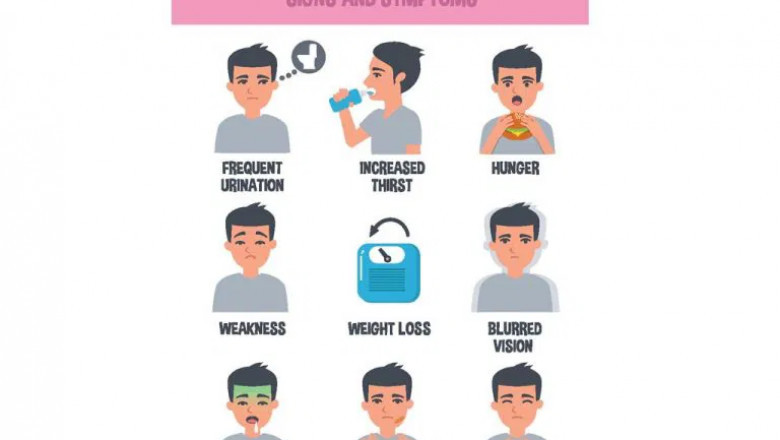views
Common Signs of Diabetes Mellitus
Early symptoms of diabetes may be mild and go unnoticed, but over time, they can become more pronounced. The most common signs of diabetes mellitus include:
-
Frequent Urination (Polyuria): High blood sugar levels force the kidneys to work harder to filter excess glucose, resulting in frequent urination. This symptom often disrupts sleep, as individuals may wake up multiple times at night.
-
Excessive Thirst (Polydipsia): Due to frequent urination, the body loses fluids rapidly, leading to constant thirst and dehydration.
-
Unexplained Weight Loss: Despite eating normally, people with diabetes may experience sudden weight loss as the body begins to break down muscle and fat for energy.
-
Extreme Hunger (Polyphagia): The inability of cells to absorb glucose leads to persistent hunger, even after meals.
-
Fatigue and Weakness: Since glucose is not effectively converted into energy, people with diabetes often feel tired and weak throughout the day.
-
Blurred Vision: High blood sugar can cause swelling in the lens of the eye, leading to vision problems that may worsen over time.
-
Slow Healing of Wounds: Poor circulation and weakened immune function in diabetes slow down the healing of cuts, bruises, and sores.
-
Numbness or Tingling in Hands and Feet: High blood sugar damages nerves, causing tingling, numbness, or burning sensations, particularly in extremities.
-
Frequent Infections: Diabetes weakens the immune system, making individuals more susceptible to infections, such as urinary tract infections, skin infections, and yeast infections.
-
Dark Skin Patches: A condition called acanthosis nigricans causes dark, velvety patches to form on the neck, armpits, and other body folds, signaling insulin resistance.
Importance of Early Detection and Management
Recognizing the signs of diabetes mellitus allows for timely intervention and prevents severe complications. Regular blood sugar monitoring, annual health check-ups, and lifestyle modifications are key to managing the condition effectively. A well-balanced diet, regular exercise, and maintaining a healthy weight play a vital role in diabetes prevention and management. In some cases, medication or insulin therapy may be required to keep blood sugar levels under control.
Conclusion
Diabetes mellitus is a growing global health concern, but early detection and lifestyle adjustments can significantly improve quality of life. Public awareness, education, and proactive healthcare measures are essential in reducing diabetes-related complications. By recognizing the signs of diabetes mellitus and seeking medical attention promptly, individuals can take control of their health and prevent the long-term effects of diabetes mellitus.






















Comments
0 comment